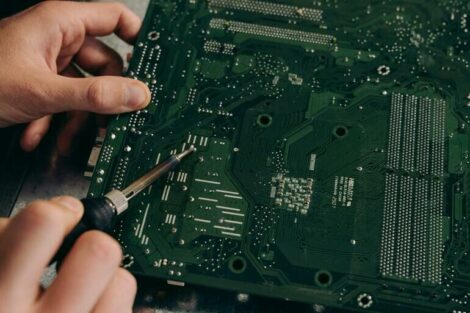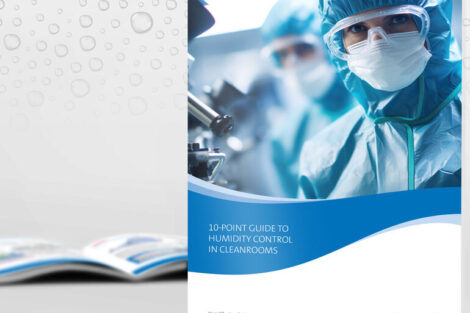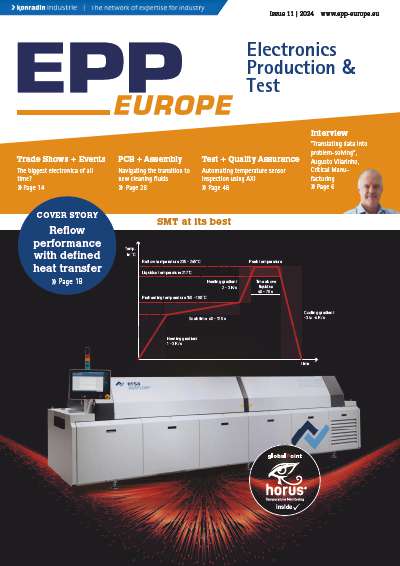Automated optical inspection is a widely used process that ensures high quality control and tracing of printed circuit boards. As components are becoming smaller and less visible, inspection solutions are imperative for the electronics production industry. At this year’s productronica, the magazines EPP and EPP Europe organized the 3D AOI Roundtable discussion with Markus Strehlitz, as the moderator, and four inspection experts; John Bashe, General Manager of Parmi USA, Inc., Carsten Salewski, CEO of Viscom AG, Jaroslav Neuhauser, Deputy General Manager of Saki Corporation, and Harald Eppinger, Managing Director of Koh Young Europe.
All participants gave interesting insights on current challenges that the industry is facing, as well as, what the future holds. As technology is becoming more complex, difficulties are arising to ensure high quality production is still being met. Trends are shifting from 2D technology to 3D measurement, new material is being used more frequently, industry standards are being regularly adopted, inspection manufacturers need to assimilate to these fast paced changes.
AOI trending challenges
The inspection of all aspects of a PCB board, including components, materials, and solder characteristics, may come with a variety of challenges. Depending on production requirements, the volume and performance, as well as the market and location, and the wide range of complex applications, one solution may not be able to face all challenges. The experts all agreed that one system cannot fit every environment. That has become the challenge for inspection providers, as it is difficult to accommodate all needs in one solution.
The difficulty of usability of a hardware or software is directly correlated to the qualification of operators, which can be problematic to most customers. The handling should not be limited, as this can potentially lead to production escapes or other mistakes. The solution should be friendly to use with optimal capabilities, especially if it needs to be running all day. However, it should also not be so complex where it will be dependent on the qualification of operators, and ultimately become discouraging to use. According to John Basche, there is a tendency where programs have too much functionality, in order to adjust every aspect, which then loses its value for the customer. This also includes programming time, which should not over exceed the changeover time.
Finding the right balance for all needs is a key element, which also goes hand in hand with flexibility. Jara Neuhauser believes that it is up to the inspection manufacturer to find the right balance for the customers. Finding the right balance between flexibility, ease of use, bandwidth, and performance can be difficult. Harald Eppinger added to that by emphasizing that finding the right tolerance as well as understanding the process variation is important for the customer. In his opinion, defects will automatically be found once the deviation has been set in place.
3D technology continues to be the trend
A majority of inspection applications are now using 3D AOI systems, as in most cases, it is no longer sufficient to only use 2D. All agreed that 3D technology has been and will continue to be on the rise, as the power of inspection solutions will continue to advance. As already seen today, objects are being measured in 3D much faster than ever before, most in a fraction of a second.
2D measurement is limited in its capabilities, and not flexible enough to follow current trends. Although 2D inspection is fading out, some applications do still require it, especially when there isn’t enough data available or for optical character recognition. As technology continues to evolve, all believed that 3D technology should be used in combination with 2D, as it is still an essential part of the inspection system itself and this will give the most flexibility. Carsten Salewski added to that by discussing the 2.5D, where angular cameras classify certain features better with 2D. Regardless of the technology, bringing the most value to the customer is important for detecting defects, minimizing false calls, as well as zero escapes.
AOI inspection with Artificial Intelligence
Although Artificial Intelligence is still in its beginning stages in the inspection industry, it has started to be integrated into specific fields for certain applications. For example, as an advisory tool, the use of AI can reduce human errors by helping operators make decisions based on data that has already been collected. It could aid with analyzing abnormalities and assess route causes. It can also be used towards reducing the noise level when collecting large amounts of data. It is currently being researched to effectively clean up and reduce analytical data noise. Especially when it comes to receiving data from multiple different processes throughout the line, AI can support with collecting all analytical data together.
Future of AOI inspection
As technology is advancing at a fast pace, software will continue to make strides towards automation in all aspects of the industry. This includes for programming, as well as, automating adjustments. Continuously manually fine tuning the process is becoming labor intensive. The future of inspection is optimizing the entire process with automation.
Minimizing human intervention is also a trend that will continue in the future. Less human evolvement can minimize mistakes. The next generation of materials will have an impact on the inspection industry, as manufacturers will also need to find solutions for all future challenges. In the end, all experts agreed that no matter what the future holds for the industry, solutions will always be geared towards helping the customer. (ch)













